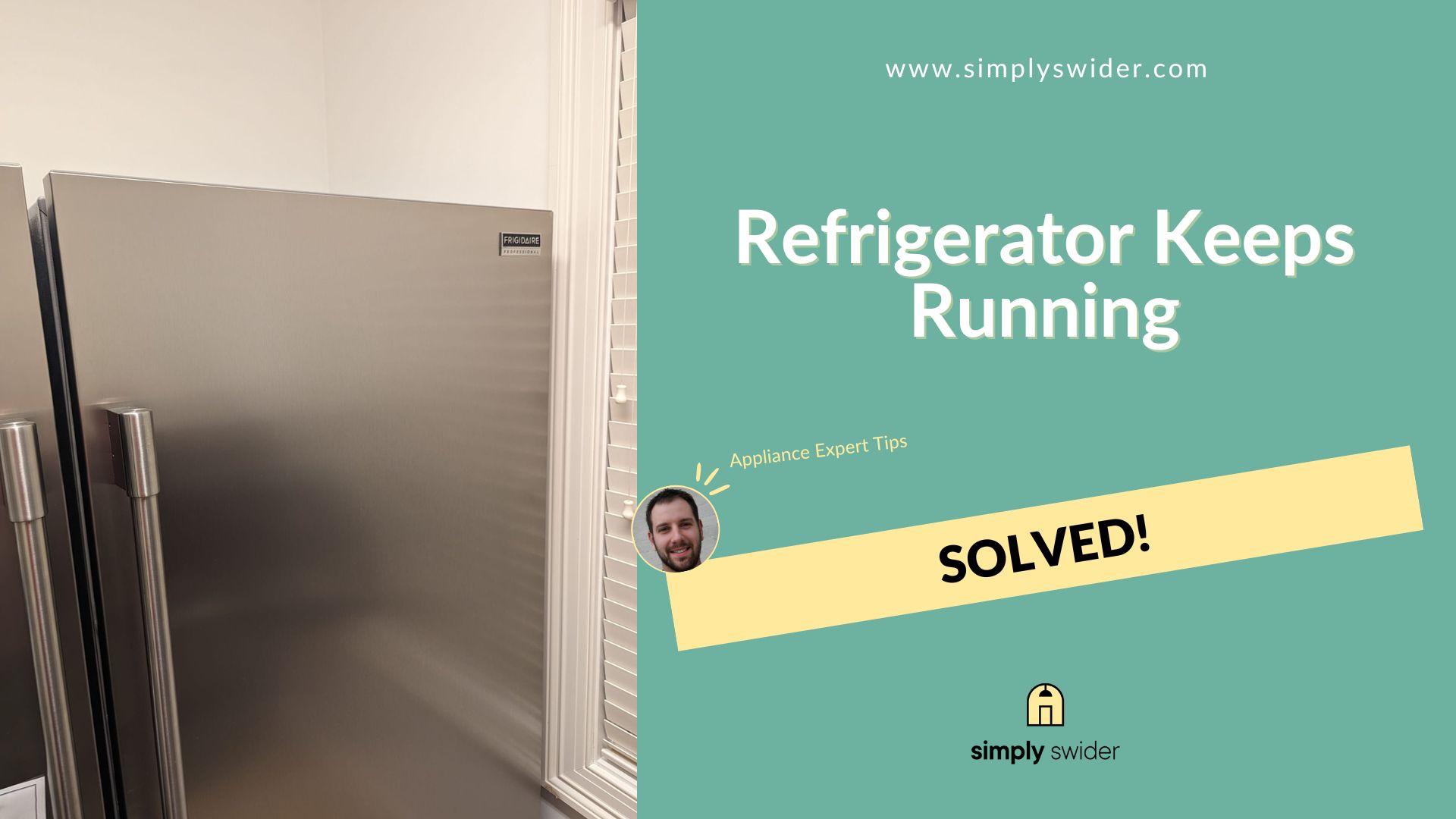One thing we can all agree on:
A refrigerator that keeps running can be a major annoyance and unnecessary waste of energy. It may also result in more complex damage to the unit.
Luckily:
I have encountered this issue multiple times during my refrigerator repair jobs, and I’ve garnered the best DIY troubleshooting techniques.
I’ve also consulted John Moss, a certified appliance technician in Ohio with over 20 years of experience, to share his expert opinion.
Without further ado, let’s get into the technical details.
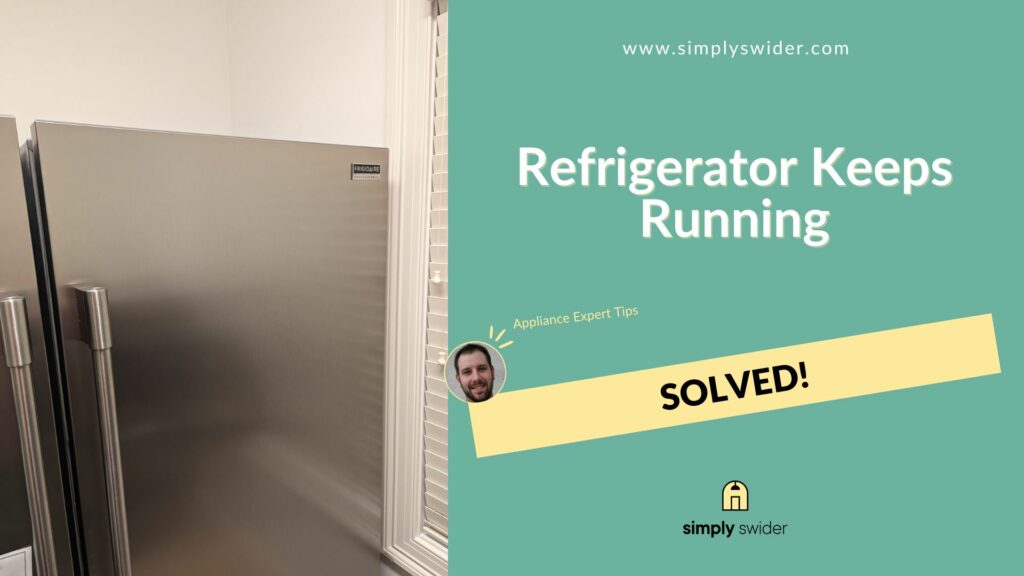
Table of Contents
5 Reasons Why Your Refrigerator Keeps Running
After working on over 40 faulty refrigeration units in my career, I’ve discovered that the main reason refrigerators keep running is due to the failure of some key components. This includes defective defrost thermostats, broken defrost timers, clogged condenser coils, damaged condenser fans, and faulty door gaskets.
As a result:
I will carefully analyze each of these possible causes and determine the best course of action for repair.
So, unplug your refrigerator switch, gather your tools, and let’s troubleshoot the problem.
| Commonly Affected Parts | Estimated Costs |
|---|---|
| Defrost Thermostat | $5 – $30 |
| Condenser Coils | $25 – $400 |
| Defrost Timer | $50 – $200 |
| Condenser Fan | $75 – $600 |
| Door Gasket | $20 – $200 |
1. Defective Defrost Thermostat
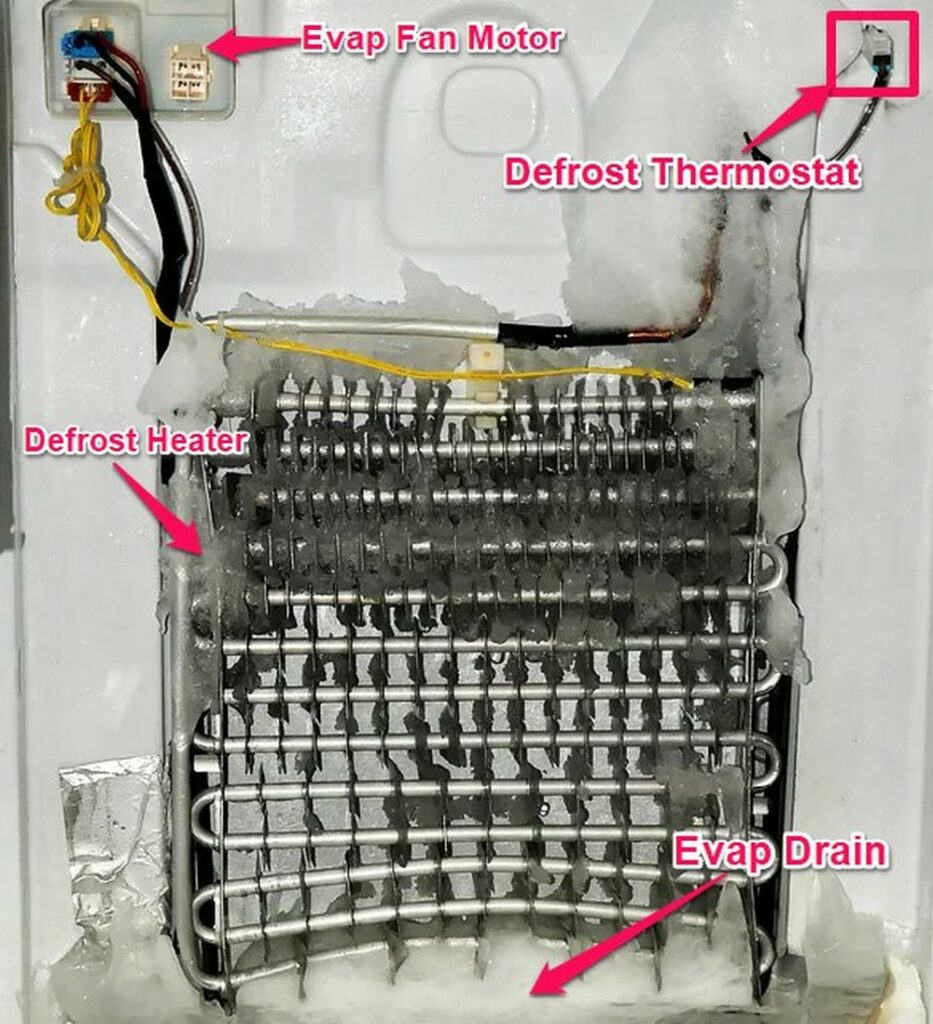
| Part | Defrost Thermostat |
| Location | It is located at the rear of the refrigerator or under the floor of the unit. |
| Ease of troubleshooting | Moderate |
| Cost | $5 – $30, depending on the model |
| Repairable | No, it should be replaced |
Get this:
If your refrigerator is constantly running, the defrost thermostat should be the first thing you check.
Reason:
The defrost thermostat regulates the compressor, signaling the defrost heater to melt any frost buildup in the refrigerator.
As such, a faulty unit may fail to perform this function, causing your refrigerator to run without cooling.
Moss adds:
“A faulty or broken defrost thermostat causes the defrost heater and fan to experience malfunctions, resulting in excessive frost buildup.”
A practical example:
While troubleshooting a running GE – GYE22GMNES, I discovered excessive frost buildup because the defrost heater was not getting signals to melt it.
A quick fix to change the defrost thermostat restored it to a good-as-new state.
Here’s how you can do the same:
- Remove any shelving or drawers that are blocking the freezer’s back panel.
- Lift the panel up and out to disconnect the old defrost thermostat from the refrigerant tubing.
- Remove the insulation from the wires as close to the thermostat as possible, and then install the new defrost thermostat.
- Apply silicone sealant to the bottom of the nuts to securely seal the connection.
- Then, affix the refrigerant tubing and test out your refrigerator.
Note:
Different models may require different steps for installation, so refer to the manufacturer’s instructions for specific guidance.
2. Clogged Condenser Coils
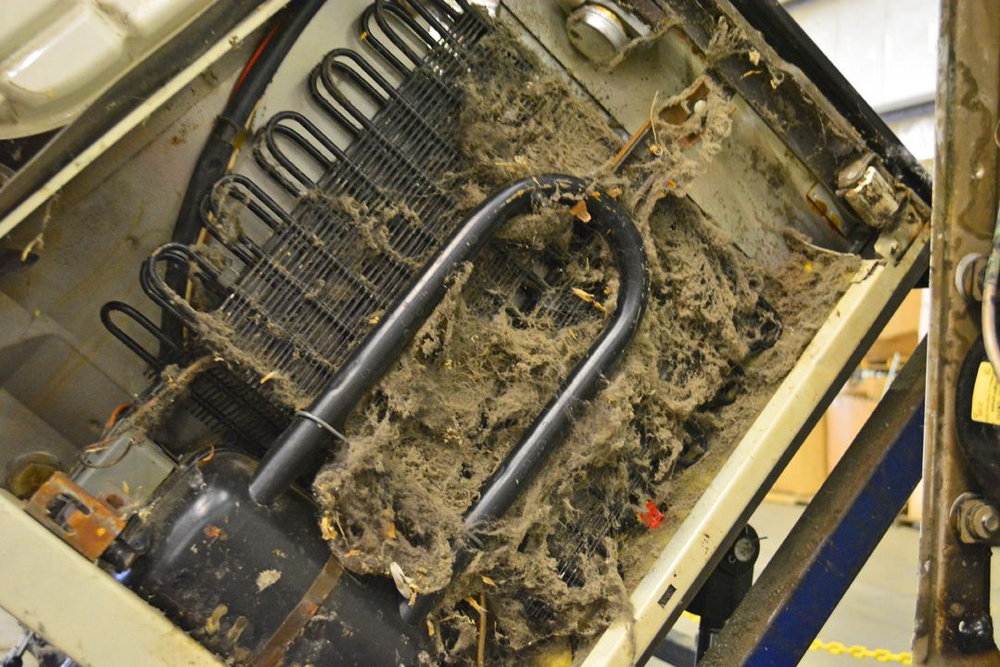
| Part | Condenser Coils |
| Location | It is located across the back of the refrigerator behind the bottom kickplate grill |
| Ease of troubleshooting | Easy |
| Cost | $25 – $400, depending on the model |
| Repairable | Yes |
Take this:
Based on my experience with many damaged refrigerators, notably GE and Whirlpool models, dirty or clogged condenser coils are the major cause of issues.
If your fridge makes a knocking noise or constantly runs, there’s likely debris in the condenser coils.
Moss affirms that 2 out of every 5 units he works on have clogged condenser coils.
He added:
“Once the condenser coils become clogged with dust, it causes excessive heat load, which restricts airflow and causes the refrigerator to run continuously. To maintain optimal performance, the condenser coils must be cleaned regularly.”
In fact:
Manufacturers recommend cleaning your condenser coil every 6-12 months, and every 3-6 months if you have pets that shed hair.
How do you clean?
Open the refrigerator doors and pull the kickplate grill out until it unsnaps. Then, use a vacuum cleaner with a brush attachment to gently remove any debris from the condenser coils.
If you have an air compressor can, it will come in handy to blow out any stubborn dirt. You can get one at any local store or online at sites like Amazon for a reasonable price.
Remember to:
Clean the surrounding areas as well to prevent future buildup.
3. Broken Defrost Timers
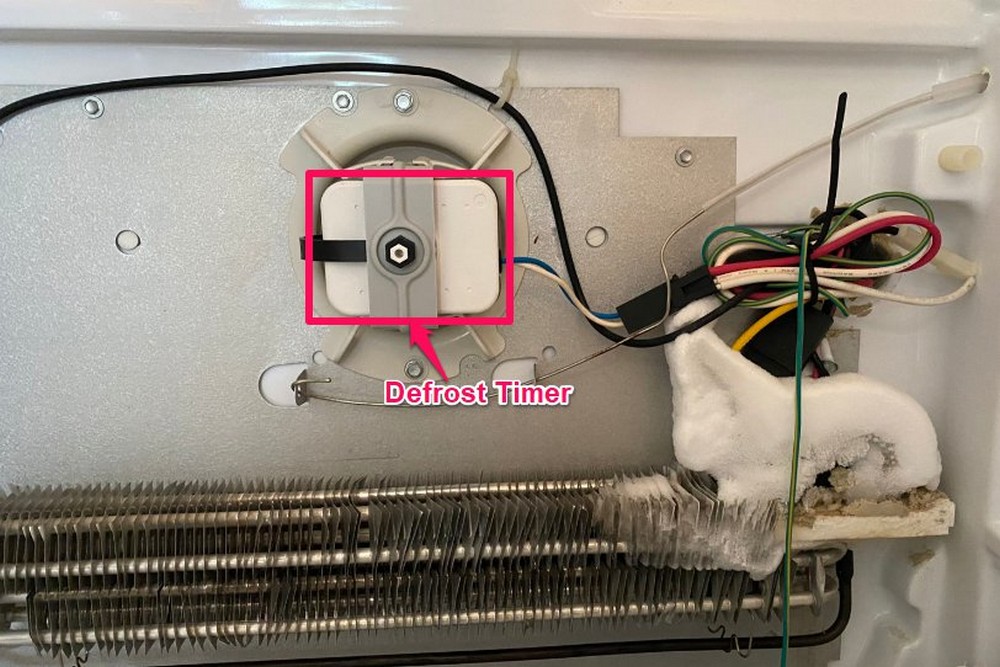
| Part | Defrost Timer |
| Location | It is located behind the kick plate on the bottom rear of the refrigerator |
| Ease of troubleshooting | Moderate |
| Cost | $50 – $200, depending on the model |
| Repairable | No |
Occasionally:
After prolonged use of your refrigerator, the defrost timer, which controls the frost freeze, may develop faults and distort the defrosting cycle.
As this happens:
Ice builds up in the freezer unit, and the compressor keeps running without cooling. This issue can be resolved by step-by-step defrost timer replacement.
What’s more, the above is one of the leading reasons why some Frigidaire refrigerators have issues cooling.
In any case, two conditions exist:
Depending on the model, the timers can either be mechanical or electronic. If it is an electrical timer, use a multimeter test to check for continuity to see if it needs to be replaced.
For a mechanical timer, use a screwdriver click test: manually turn the timer and listen for a click sound until the heater switch is activated.
If it fails to perform this action, a replacement is required.
Note:
Some newer refrigerator models use defrost control boards rather than defrost timers, which can also experience similar faults.
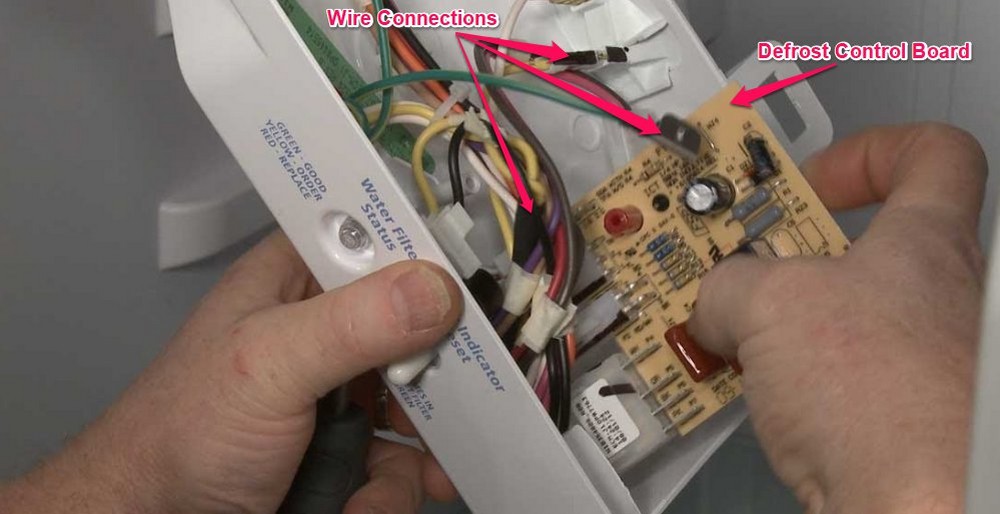
In this case:
You’ll need to replace the control board assembly, which is located behind the freezer section’s back panel, under the evaporator coils.
To do that, follow these simple steps:
- Remove the screws securing the control panel and pull it forward to release.
- Note all the wiring orientations and disconnect thewire connections (grounding wire, lights wire, etc.)
- Release the damper control arm to remove the old control board.
- Install the new control board and connect the wires to the appropriate terminals.
- Align the control board slot in the damper control arm and reconnect all disconnected wires.
- Then, connect the power cord and test the control board’s functionality.
Note:
Carefully follow the manufacturer’s guidebook to avoid potential hazards.
4. Damaged Condenser Fan
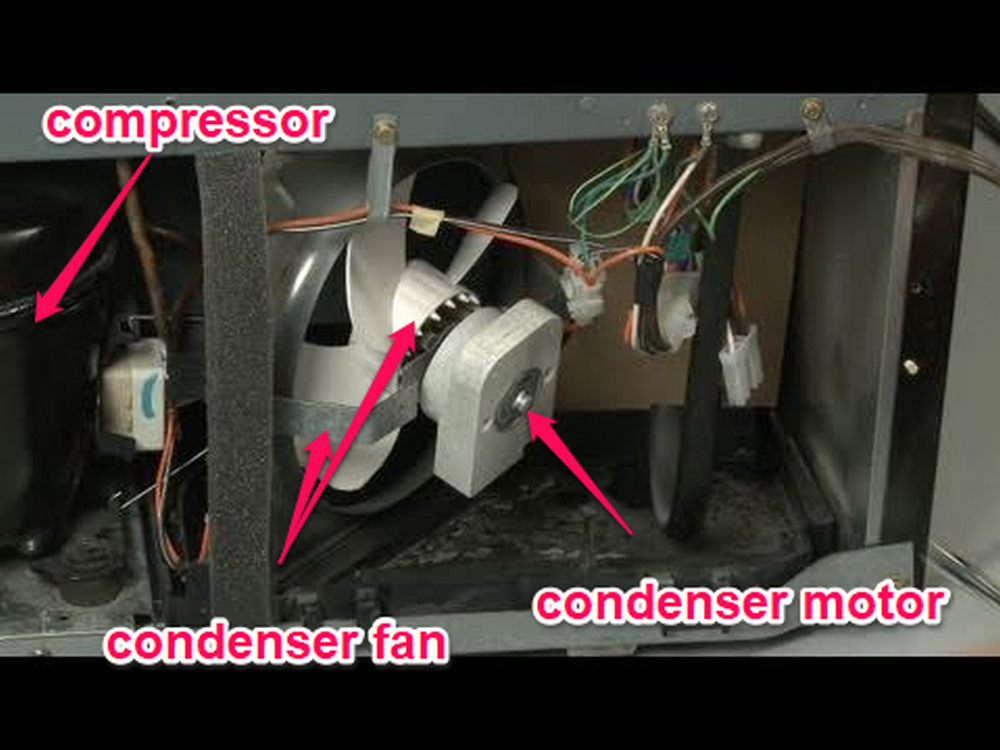
| Part | Condenser Fan |
| Location | It is located on the bottom of the refrigerator behind the front grill plate |
| Ease of troubleshooting | Moderate |
| Cost | $850 – 2500, depending on the model |
| Repairable | Yes – If the fan blades are obstructed No – If the fan motor is damaged |
You see:
For an old unit that is running, you might replace the defrost timer and still encounter a similar issue.
A good example:
A Reddit user complained that their 15-year-old Whirlpool refrigerator stopped getting cold—save for the freezer section.
Furthermore, the unit was constantly running without kicking itself into defrost mode—due to ice and frost buildup in the back of the freezer.
The user replaced the defrost timer, but the refrigerator was not cooling and still running constantly.
From Moss’ point of view:
“The problem is most likely a faulty condenser fan, which controls the airflow and cooling of the refrigerator.”
And I agree. Thankfully, troubleshooting this is of moderate difficulty, so you should be fine.
Here’s what you need to do.
Locate the condenser fan motor behind the refrigerator’s rear access panel and look for any obstructions or breaks that are preventing the blade from spinning.
If there are no obstructions, use a multimeter test to check for continuity and whether it needs to be replaced.
Undoubtedly:
If this process is done correctly, your refrigerator should be in good working order with no running issues.
5. Faulty Door Gasket
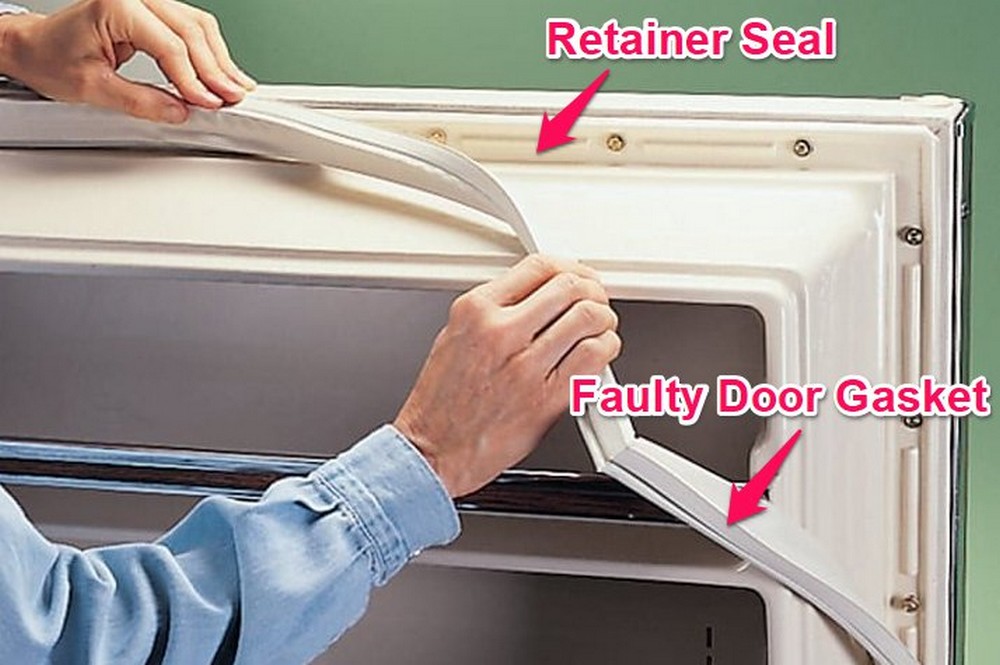
| Part | Door Gasket |
| Location | It is located at the outer edge of the refrigerator door seal |
| Ease of troubleshooting | Easy |
| Cost | $20 -$200, depending on the model |
| Repairable | Yes – If it’s still in good shape No – If it’s damaged |
Get this:
Another plausible reason for this running problem is a faulty door gasket. Air leaks caused by damaged or loose seals can cause the refrigerator to run more frequently than usual.
See:
One Reddit user had a faulty door gasket and noticed massive amounts of ice inside in a matter of days. This can lead to more complex problems if not addressed quickly.
To resolve the issue:
Close the door and use hot water or a hair dryer to reshape the gasket. This should securely seal the door. However, if it doesn’t, you may need to replace the gasket entirely.
Luckily:
You can purchase a replacement door seal for most model freezers from their official stores. For example, the Whirlpool Parts Store.
You can also shop for one online from various retailers, such as Amazon.
3 Maintenance Tips from Simply Swider to Prevent Your Refrigerator from Intermittent Running
1. Ensure Regular Cleaning and Defrosting
Often:
The primary reason why your refrigerator keeps running is due to defrost buildups caused by the lack of regular cleaning.
Moss adds:
“It is essential to adopt a cleaning routine to prevent the accumulation of dust or frost debris, which can impede the proper operation of your refrigerator.”
Additionally:
I will recommend you clean and deodorize your refrigerator interiors at least every 6 months to elongate its working life.
2. Keep the Temperature Settings at Optimal Levels
You see:
Another reason your refrigerator constantly runs is that the interior temperature is set above or below its optimal range.
To avoid this issue:
Make sure the temperature is set at the recommended level, usually between 37-40 degrees Fahrenheit for the refrigerator and 0-5 degrees Fahrenheit for the freezer.
3. Avoid Overloading Your Refrigerator Beyond Its Capacity
Lastly:
Do not overstuff your refrigerator or freezer unit with food items. A crowded fridge restricts proper airflow, and the compressor may run without cooling.
Therefore:
Check the manufacturer’s guide for your unit’s loading capacity and don’t go beyond it.
Conclusion
All in all:
A running refrigerator is a problem that no one wants to deal with, and the high electricity bills that come with it can be infuriating.
You don’t want to spend the entire day attempting to resolve the problem.
Luckily, you can try these simple DIY troubleshooting steps:
- Replace the defective defrost thermostat
- Unclog the condenser coils
- Replace the faulty defrost timers
- Change the condenser fan motor
- Ensure the door gaskets are properly sealed
Moss adds:
“Yes, these troubleshooting steps are key to addressing any potential issues. But if the problem persists, ensure to consult with a professional technician or your brand’s customer service.”
In my experience:
You should always prioritize maintenance and regular checks to keep your refrigerator unit in good working condition.
One last thing:
Don’t forget to share your concerns and questions in the comments section below. I would be happy to provide further assistance or clarification.
Frequently Asked Questions
While there are numerous approaches, my expert advice is to check the defrost thermostat with a multimeter test to ensure it’s in good working order. If it fails the test, you know an immediate replacement is needed.
Simply monitor the temperature changes. If the inner temperature of your refrigerator is too high, it may indicate that the compressor is overheating and running too long. Unnecessary high electricity bills are another indicator of potential refrigerator running issues.
Yes, there are several alternatives already highlighted in the guide. First, replace the defrost thermostat and clean the condenser coils. Subsequently, change the defrost timers and the condenser fan motor, then test your refrigerator unit to ensure it’s in perfect condition.

